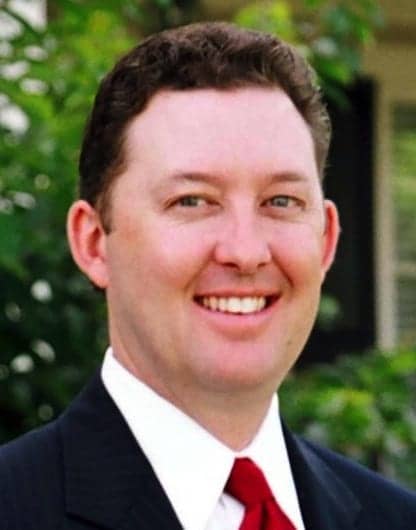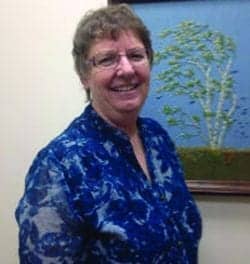As part of a daylong, pre-convention session that covered different aspects of “Taking Care of Business,” consultant and business coach Steve Woodward gave a talk titled “Meat and Potatoes.” Woodward, CEO and co- founder of the Johns Creek Audiology and North Georgia Audiology practices in Georgia, gave a dynamic presentation on business strategies designed to help private audiology practices work more effectively while remaining profitable in today’s competitive marketplace.

Steve Woodward, a consultant, business coach, and the CEO and co-founder of the Johns Creek Audiology and North Georgia Audiology practices in Georgia.
Woodward explained that his presentation was built around four or five key questions, and kicked off the session by asking how many of the ADA 2014 Convention attendees in the room had “implemented the unbundled method.” After announcing that this was actually the final and most important question of his presentation, Woodward explained that he wanted to ask it at the beginning as a way of getting people who were trained as audiologists to start thinking more as business owners.
According to Woodward, audiologists are often overwhelmed by the insurance issues, taxes, and other challenges associated with running a private practice. They tend to focus more on patients than they do on business—and this is as it should be, Woodward emphasized. Woodward recommended that audiologists who own medium sized and larger private practices either: have a solid business manager in place that is empowered to run the business side of things, or hire a specialized consultant the same way you have a trusted CPA and attorney. This would allow them to continue practicing audiology and providing excellent service, and still make sound business decisions.
Once Woodward’s provocative introduction had generated considerable interest among attendees in the room, he posed his first question:
How often should the business owner be reviewing the financials of the business?
Most ADA attendees chose the answer that corresponded with Woodward’s recommendation. “You should be reviewing financials every month in order to stay on top of how your business is doing and spot trends,” he said.
Woodward’s next question was:
Should your audiology practice be involved with or under contract with Internet site partners, or insurance company backed co-ops where you accept a fitting fee only?
The short answer provided by Woodward was “no,” and the reason he gave was that this kind of partnership could hurt a practice’s bottom line, in both the short- and long-term. His recommendation was that private audiology practices continue working directly with insurance providers as “in network providers,” if possible, rather than working with insurance sponsored hearing aid distributors or middlemen. The primary reason for this recommendation is that most patients want to use their insurance hearing aid benefits and have access to the professional advice and services of a respected audiology practice.
“You cannot stay in business very long offering both for a mere $300-$400 fitting fee,” said Woodward.
Woodward’s longer answer to this question involved a discussion of the “big box” hearing aid providers like Costco, Wal-Mart, and others. Woodward explained that, although the big box providers pose competition, a smaller private practice can compete in the marketplace by providing patients with high-quality professional consultations, and doing the following to succeed:
- Always be proactive vs reactive;
- Don’t worry about what the competition is doing—it’s probably wrong;
- Expand your market reach and/or market yourself better;
- Cultivate your staff and their talents, or let them go;
- Improve your metrics;
- Master your profit + loss (P&L)—take a business class, if needed;
- Expand your consultative sales process;
- Live and breathe patient satisfaction, and
- Invest in and grow the business.
Woodward added that small practices might consider offering patients additional services in the form of monthly hands-on classes, such as a “tech class” where patients can learn how to connect their compatible hearing aids to Bluetooth and other technologies.
Question number three was really multiple questions, and Woodward led into it by announcing, “Now its time for the meat!” He followed by asking, “Are you really independent?” This introduced the real question, which was:
Is your business financially tied to one or more manufacturers, and should it be?
The recommended answer to this question came by way of a lengthy discussion on the pros and cons of entering into a one-on-one business relationship with a manufacturer. On the plus side, everyone in the room seemed to agree that manufacturers often provide much-needed back-end support. On the negative side, you lose both your practice’s “uniqueness” and the ability to purchase from multiple brands. Also, manufacturers will often ask audiology practices for access to their patient databases in order to implement your marketing projects.
“Never do this!” Woodward advised. According to Woodward, many practices will give manufacturers access to their patient databases without realizing that they are essentially handing over their businesses.
“Your marketing should be focused on the practice itself, not the brand of hearing aid and a dollar off coupon! It is still possible to remain independent, and be important to your manufacturers of choice,” said Woodward.
The next question, which was of keen interest to a rapt audience, was:
How should an audiology practice structure pricing?
Woodward said that every practice needs to set up its pricing of services and products based on what the practice needs to make in order to succeed long term—not based on what competitors are doing. How does one figure this out? Woodward explained that, while there is no perfect model, there is a basic series of steps one can follow to figure out pricing:
- Determine your base hourly service rates;
- Multiply 40 hours per week by 52 weeks = 2080 (per each FT provider) minus time off; or appropriate per PT provider
- Total up your expenses, less COG, divided by total provider hours;
- The result is your baseline rate per hour. (Hourly rates tend to fall between $120-$140 per hour, though this can vary due to variations in costs in different geographical areas.)
The presentation became more of a question and answer session, with attendees posing many questions about pricing options. Woodward said it might be best to answer these questions by moving ahead to question number five, and answering them both together.
“To bundle or not to bundle?” asked Woodward. “That is the question.” The slide he showed posed the question a bit differently:
Is changing to an unbundled model a good idea?
Woodward said he has found that many practices are now choosing to unbundle their products and services. He recommends that audiology practices consider offering both bundled and unbundled pricing options to patients. By offering patients the option to either “pay as you go” (unbundle product from services), or pay a bit more for a “concierge care” option (services are bundled together with the product), audiologists can put the patients in charge of the kind of audiology care they want. At the same time, this approach allows the discussion of service to take center stage.
How changing to an unbundled model benefits the patient. If a patient chooses a “pay as you go” option, where they are agreeing to fewer audiology services after their initial fitting period, they may be able to purchase a more expensive, premium hearing aid that they would not otherwise be able to afford.
How changing to an unbundled model benefits the audiologist. The audiologist is likely to sell more premium hearing aids, which will likely lead to more satisfied patients. Further, with the issue of pricing removed as the obstacle, the audiologist can discuss which services might be best suited to individual patients, based on their specific needs.
Source: Steve Woodward, ADA 2014 Convention





